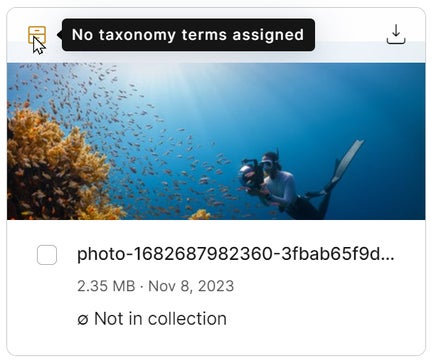Tag assets with asset taxonomies
Asset taxonomies provide a powerful way to tag and organize your assets, streamlining the process of maintaining consistency in your asset library. You can organize assets by the department they belong to, a region they’re for, or a topic they’re about, and make it easier for your team to manage and find the assets.
